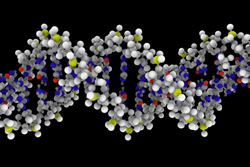Super-efficient cargo carrier molecules
In the field of gene therapy, the effective delivery of genetic material into the cell where it will perform its function is crucial. Indeed, any biomolecule in the form of cargo must be translocated into the cell to its point of action. Cell penetrating peptides (CPPs) hold the promise of acting as vectors of hydrophilic molecules into living cells for therapeutic purposes. Without the inherent problems involved with the use of viruses, CPPs appear to be the biomolecular answer for delivery of these remedial molecules. Consortium partners in the CPP project sought to remedy one aspect of this technique that had been a stumbling block in previous research. That is, exactly how to isolate the most efficient CPPs using high throughput screening (HTS). The team tested fluorescent labelled proteins using their emission signals. The procedure required the elimination of luminescence of non-internalised peptides in order to identify those molecules that had been internalised. Another screening method was based on the tracking of non-labelled peptides. These were identified on taking up fluorescent dye when internalised. In an extension of their work, the process of biotinylation was used to identify the best CPPs for carrying the cargo. Biotinylation capitalises on the binding properties of biotin with labelled avidin. Consequently, the cargoes formed a complex with the biotin-tagged CPP and avidin. Any intracellular protein was then quantified using the label, fluorescent tag or enzyme activity. Further research is planned which would involve the enzyme based assay (Cre-recombinase) in reporter mice to ascertain the specificity of CPP delivery. The ability of CPPs to successfully ferry therapeutic molecules into cells holds amazing potential for the biopharmaceutical industry.







